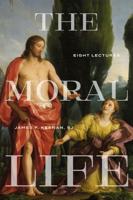Publisher's Synopsis
Sight is both celebrated and denigrated in religion. In some contexts it is extolled as a source of knowledge and revelation. In others it is demonized as the road to illusion and idolatry. There is no single way that sight functions in religion, nor indeed a single way to study it. This edited volume brings together scholars from a wide range of disciplines-religious studies, anthropology, art history, film, and philosophy- to shed light on how the sense of sight shapes, and is shaped by, religion. Case studies range across both place and time, from narratives about Medusa in ancient Greek religion to spiritual explanations of sleepwalking in the Enlightenment to rituals of spirit possession in contemporary Brazil. In order to shed light on interconnected issues, the essays are grouped into three sections, moving thematically from darkness into light: 1) Obscurity 2) Altered States 3) Illumination. The contributors seek to avoid some of the historical pitfalls of Western discourses that hierarchize the senses, and in particular privilege and separate sight from the other senses, imagining it as an unimpeachable source of empirical knowledge. They present the ways in which sight transgresses such constructions, whether by being creatively misleading or taking on tactile qualities. Viewed in the context of lived religious experience, sight surfaces in multiple, unbounded ways. In a theoretically rich and self-reflective introduction, the volume editors set the stage by asking questions at the core of our discipline: What do we see, and-just as importantly-how do we see, when we study religion?









